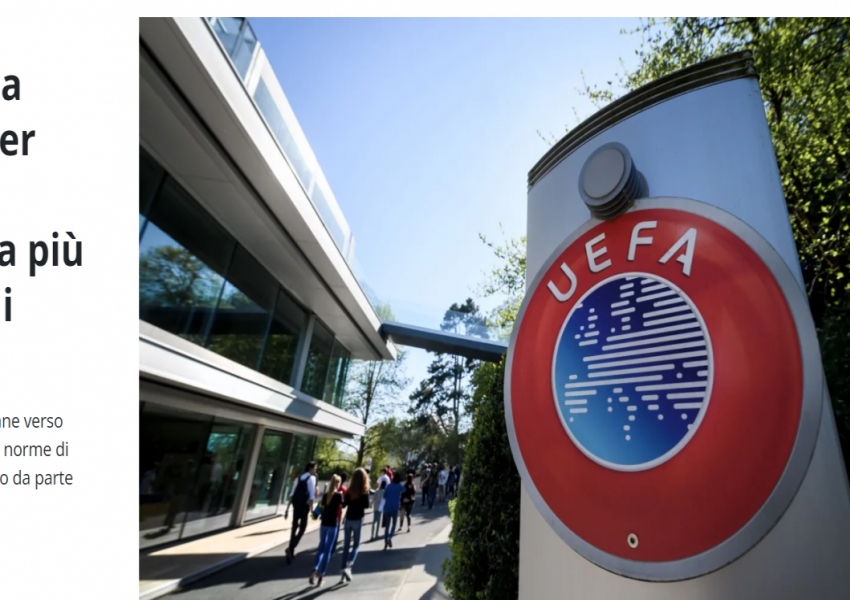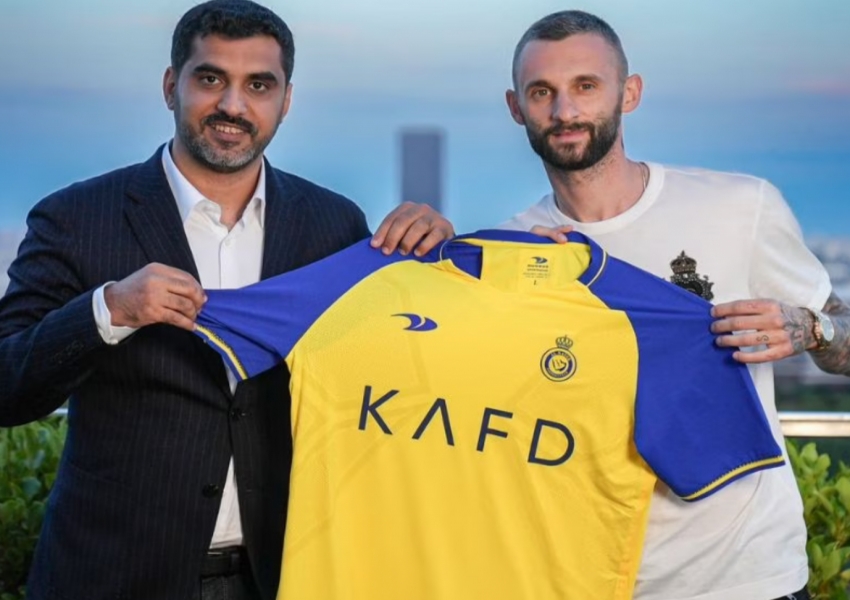Inter Milan on the Edge Under UEFA's New Regulations: Expect More Brozović-like Deals
UEFA's Financial Fair Play (FFP) regulations are set to undergo significant changes with the introduction of the new "squad cost ratio" rule. This shift represents a substantial departure from the current FFP regulations, which primarily monitor deficits. In contrast, the new regulations will focus on the ratio of a club's spending to its net revenue, with penalties for clubs that exceed the specified limits.

The new rules stipulate that from the 2023-24 season, the spending cap will be set at 90% of the club's revenue, decreasing to 80% in the 2024-25 season, and finally to 70% in the 2025-26 season and beyond. This change will have a profound impact on many clubs, including Inter Milan.

Impact on Inter Milan
Inter Milan, with their current season revenue of approximately €408.8 million, rank second in Serie A, close to AC Milan (€400.3 million) but behind Juventus (€483.3 million). Juventus benefits from owning their stadium, an advantage that both Milan clubs cannot match in the short term.

When it comes to expenditures, Inter's total spending on player and staff salaries is €178.6 million, lower than Juventus' €242.95 million but significantly higher than AC Milan's €133.2 million. Inter's amortization and impairment costs amount to €97.649 million, also less than Juventus (€155.9 million) but far exceeding AC Milan (€55.054 million). Furthermore, Inter's spending on agent fees is about twice that of AC Milan.
In total, Inter's current annual expenditure is around €287 million, more than AC Milan's €193.8 million but less than Juventus' €406.8 million. Calculating the spending ratio, Inter stands at exactly 70%, just within UEFA's future FFP target. However, this leaves no room for error, placing Inter in a precarious position where any deviation could result in non-compliance and subsequent penalties from UEFA.
Comparing to Rivals
While Inter's situation is slightly better than Juventus, whose spending ratio is 84%, AC Milan's spending ratio of only 48% provides them with much more leeway. This comparison highlights the significant constraints Inter faces in the coming years under the new regulations.
Inter's position on the edge means they have little resilience to unexpected risks. If they fail to either increase revenue or reduce costs, numerous scenarios could push them over the limit, leading to UEFA sanctions. Risks include unforeseen events like a pandemic, poor transfer decisions, high-salary contracts, stadium bans due to fan misconduct, failing to advance in the Champions League, or changes in tax laws unfavorable to football clubs.
Historical Context and Future Strategies
Inter has previously navigated FFP scrutiny using creative solutions. For instance, during one examination, they sold several youth players to Atalanta for over €10 million and later bought back one of those players, Alessandro Bastoni, for €31 million at a premium. These moves allowed Inter to meet FFP requirements temporarily but are not sustainable long-term strategies.
Under the new regulations, Inter must focus on increasing revenue and cutting costs. Even reducing the spending ratio from 70% to 65% would provide more breathing room. Revenue growth is challenging but possible through increased social media earnings, participation in the Club World Cup, and successful sales of loaned players.
Cost reduction will also be critical. Inter must ensure that every significant salary expenditure is justified, which was a factor in the summer sale of Marcelo Brozović. The current financial pressure means Inter cannot afford to retain a player with a pre-tax salary exceeding €12 million if they are not consistently contributing.
Revenue and Cost Management
To boost revenue, Inter could explore various avenues:
Social Media Growth: Capitalizing on the increasing importance of digital platforms, Inter can enhance their social media presence to attract more sponsorship deals and increase merchandise sales.
Club World Cup: Success in international tournaments like the Club World Cup can bring substantial prize money and global exposure, enhancing the club's brand and revenue streams.
Player Sales: Efficiently managing the sale of loaned players can provide significant funds, as seen with previous transactions that netted the club €22 million.
Cost management will require a meticulous approach:
Salary Cap: Imposing a stricter salary cap to ensure high wages are justified by performance and contribution to the team.
Smart Transfers: Focusing on strategic transfers that provide value for money, avoiding high-cost acquisitions that do not perform as expected.
Youth Development: Investing in youth development to bring through homegrown talent, reducing the need for expensive signings and creating potential future transfer revenue.
Expected Outcomes and Potential Moves
Given the financial landscape, Inter is likely to see more transactions similar to the Brozović sale. The club's leadership, including CEO Giuseppe Marotta and Sporting Director Piero Ausilio, have often spoken about the need for creativity in managing finances. Future transfer windows may involve strategic sales and acquisitions aimed at maintaining financial stability while remaining competitive on the pitch.
Inter's focus will be on maintaining a competitive squad capable of challenging for titles, both domestically and in Europe, without compromising their financial health. This balancing act will be crucial in ensuring the club's compliance with UEFA's new regulations and avoiding penalties that could hamper their progress.
In conclusion, the introduction of UEFA's new squad cost ratio rule places Inter Milan in a delicate position. While they currently meet the 70% threshold, the lack of margin for error necessitates careful financial planning and strategic management. By focusing on revenue growth and cost reduction, Inter can navigate these challenges and continue their pursuit of success on and off the field.
Copyright Statement:
Author: mrfootballer
Source: Mrfootballer
The copyright of this article belongs to the author. Reproduction is not allowed without permission.
Recommended Blog
- Serie A Round 11 Preview: Striker Duels Highlight Inter’s Battle, AC Milan Shifts Focus from Champions League
- Inter Milan's Critical Competitive Edge: From Mediocrity to Dominance in Europe's Top Leagues
- J. League Cup Final: Fukuoka Wasp Aim for First Title, Urawa Red Diamonds Seek to Extend Cup Success
- EFL Championship Round 15: Leicester City Should Settle on Iheanacho, Can Ipswich Replicate Last Season's Success?
- Coppa Italia Round 2: Torino's Psychological Edge, Frosinone's Laid-Back Approach
- Carabao Cup Fourth Round: Chelsea Seeks European Qualification, Liverpool's B Team Dominates
- German Cup Round 2 Preview: Stuttgart Shouldn't Abandon the Cup, What About Leipzig's Defense Intentions?
- La Liga Round 11 Preview: Can Real Madrid Win the First Clásico? Almería in Dire Straits
- Bundesliga Round 9 Preview: Can Bochum’s Season Start in Round 9? Stuttgart’s Offensive System in Full Gear
- Champions League Group F Round 3: PSG's Possession Struggles and Newcastle's Attack Power
Hot Blog
- English Media: Manchester United Will Win Premier League Title in 2028! History Will Repeat Itself, Two Teams Serve as Inspirations
- 0-2 Double Defeat! China National Team Stuck at 6 Points: No More Direct World Cup Hopes, Two Crucial Matches Ahead
- 4 AM Showdown: Barcelona's Revenge Match! Win = 3-Point Lead Over Real Madrid, Key Players Rested
- China National Football Team Drops 13.6 Points, Slips to 94th in FIFA Rankings: Syria Overtakes, New 9-Year Low
- 0-0 Draw! Japan 12 Shots, 2 Missed One-on-Ones: 8 Matches, 20 Points, Group Winner, Saudi Arabia Stuck at 10 Points in 3rd
- 4-1, Double Win Over Brazil! Argentina Celebrates: World Cup Qualification Secured, 4th Team Globally to Qualify
- Real Madrid Got Lazy: 7 Kilometers Less Running in UCL! Two Superstar Spectators While Barça Outruns Them All
- United Go for Glory: Unbeaten in 10, Fueled by Kobbie Mainoo’s Return, Red Devils Eye Europa League Crown
- Champions League Classic: Barça’s Midfield Maestro Worshipped by Thousands After 11.5KM Marathon
- Champions League Semifinal Odds: Barça at 99%, Real Madrid’s Hopes Dwindle to 6%, PSG Cruise Ahead